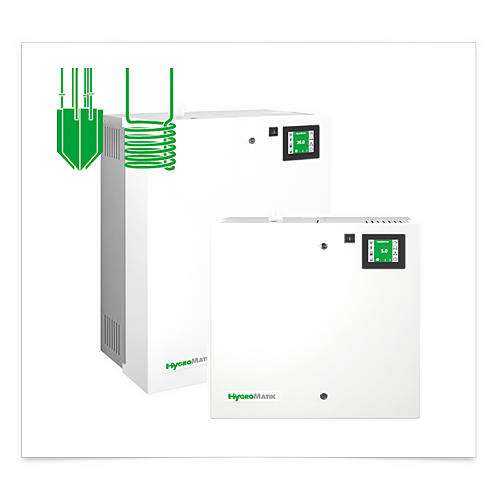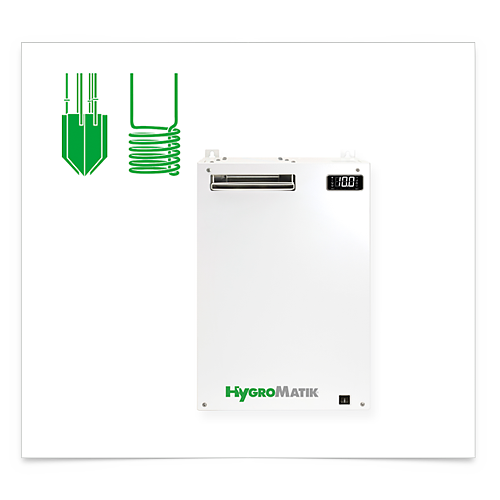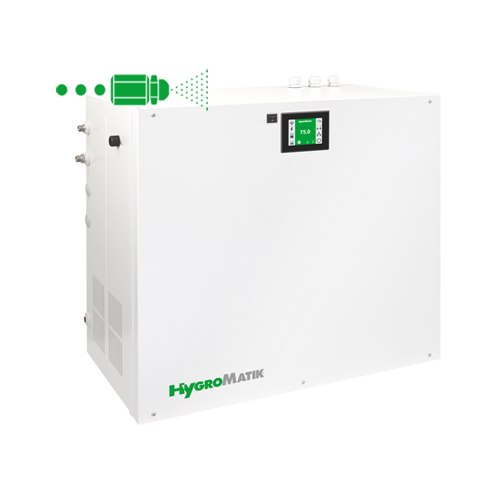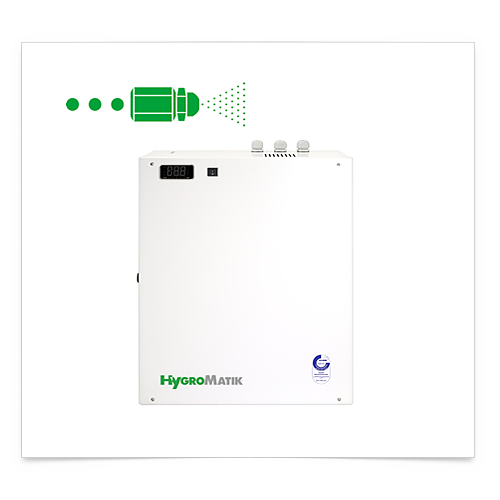Optimal air humidity in
school buildings
40-60%
NATURAL.
HYGIENIC.
HEALTHY.
The healthy indoor climate in school buildings.
Autumn has barely come when in school it starts again and one wave of colds follows the next. In addition to the gaps in teaching for the individual sick pupils, there is also an increase in the number of sick teachers. This results in many free or substitute lessons - often to the delight of the students, but also always to their disadvantage in terms of the educational mission.
Scientific findings show that the indoor climate has a major influence on the health, well-being and performance of students and teachers. The comfort zone of humans lies between 40 and 60 % in relation to the relative humidity (RH). Between these two values, a person feels comfortable, is efficient and remains healthy.
Optimally moistened mucous membranes in the nose and mouth protect students and teachers from the penetration of particles, bacteria and viruses into their airways.
The transmission rate of viruses via the air is reduced because virus particles form larger droplets at a humidity level of 40-60 % and thus sink to the ground faster.
The survival time of viruses on surfaces is reduced at an air humidity of 40-60 %. Viruses with a fat cover (e.g. corona viruses) are most unstable under these conditions.
The skin's state of hydration is in the optimal range at an air humidity of 40-60 %. Complaints such as itching and skin irritation among students and teachers are reduced.
At an air humidity of 40-60 %, significantly less moisture evaporates via the eyes. Thus, the eyes of students and teachers are better protected against dehydration.
A humidity of 40-60 % leads to less stress symptoms and improves the conditions for physical activities of students and teachers.
Students who feel good and enjoy good health are demonstrably more concentrated, alert and motivated. The performance of the students, but also of the teachers, increases with regulated indoor air in the school buildings. The pupils are more receptive to the transfer of knowledge and in the end achieve better school grades without additional pressure to perform. This in turn increases the fun and enjoyment of the lessons.
The advantages for your school:
With heating in autumn/winter, the relative humidity decreases.
Keeping the air humidity stable in our comfort zone at 40-60 % is not always easy and can only be reliably guaranteed by technical humidification of the indoor air. Especially in autumn and winter, we quickly leave the optimal range between 40 and 60 % relative humidity due to the regular and necessary exchange of the heated indoor air with colder outside air. This is because cold air can physically absorb less moisture than warmer air. If this outside air now enters a warm room and warms up from, for example, 0 °C to 22 °C, the relative humidity (RH) of this heated air cannot exceed approx. 20 % in the end. This means that in winter, the supply of fresh air inevitably leads to a reduction in the humidity of the indoor air and to leaving the comfort zone of 40-60 %.
For this reason, the German Building Climate Association (FGK) recommends that planners, architects and operators of buildings supplement ventilation systems with professional systems for air humidification in order to regulate air humidity and ensure a healthy indoor climate.
Our systems for air humidification in school buildings.

Humidification principle:
Isothermal, temperature remains unchanged during humidification
Water quality:
Installation:
In the ventilation system or directly in the room
Special features:
Special ease of use through touch control

Humidification principle:
Isothermal, temperature remains unchanged during humidification
Water quality:
Installation:
In the ventilation system or directly in the room
Special features:
Compact dimensions

Humidification principle:
Isothermal, temperature remains unchanged during humidification
Water quality:
Tap water of different qualities
Installation:
Directly in the room
Special features:
Integrated quiet-running ventilation unit

Humidification principle:
Adiabatic, humidifies and cools simultaneously
Water quality:
Fully demineralised water without additives
Installation:
In the ventilation system
Special features:
Special ease of use through touch control

Humidification principle:
Adiabatic, humidifies and cools simultaneously
Water quality:
Fully demineralised water without additives
Installation:
In the ventilation system
Special features:
Compact dimensions
Get information and advice now.